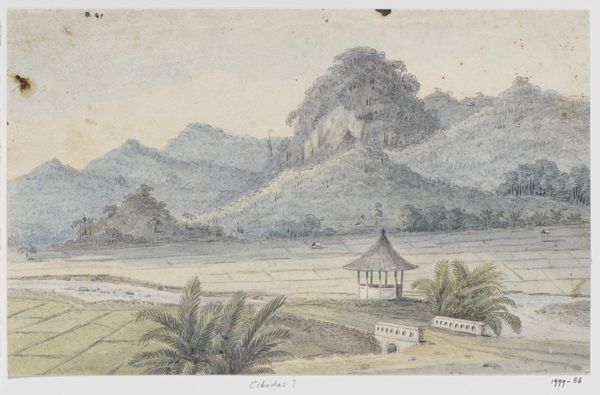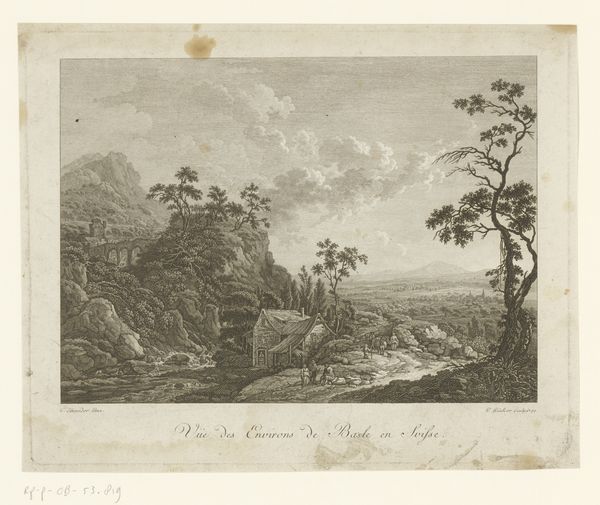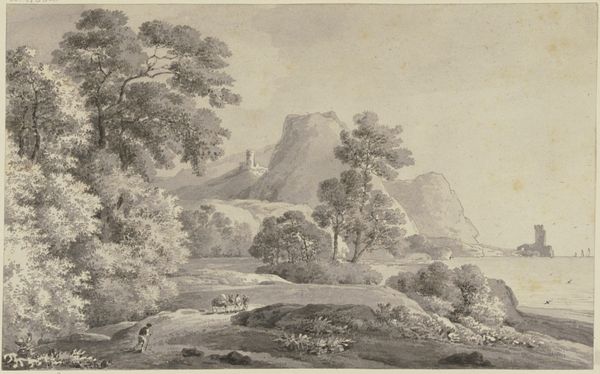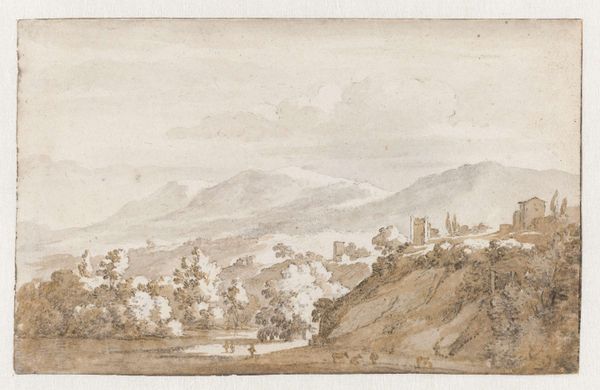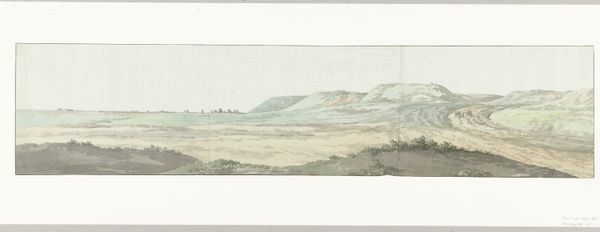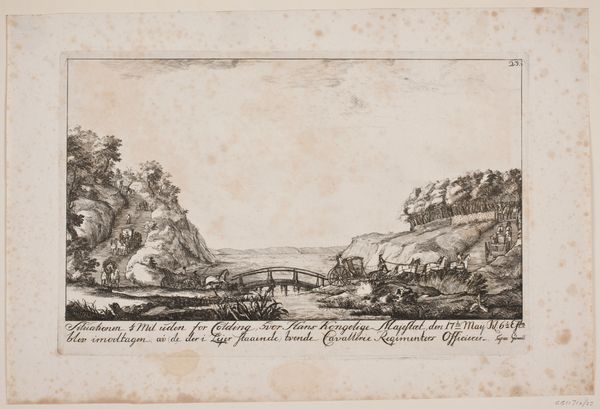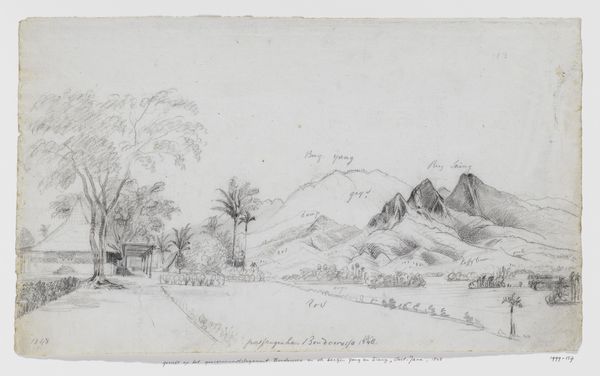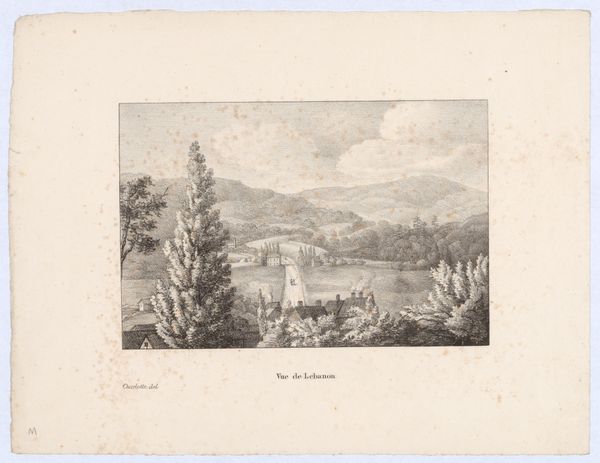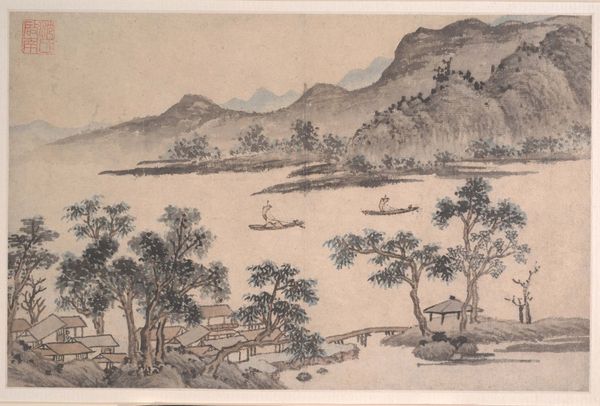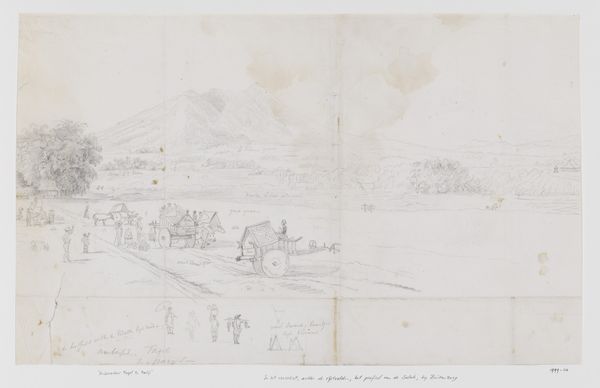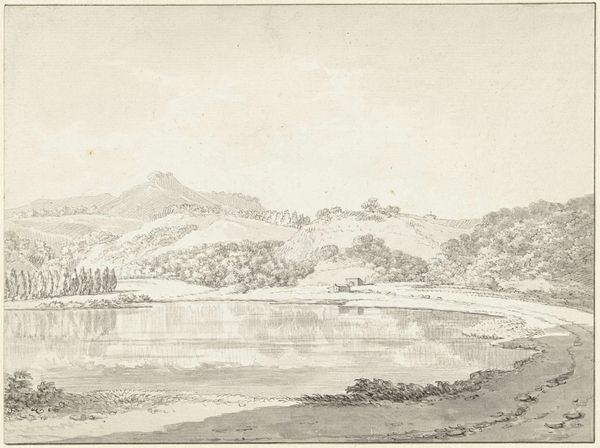
painting, plein-air, watercolor
#
water colours
#
painting
#
plein-air
#
landscape
#
watercolor
#
botanical drawing
#
15_18th-century
#
realism
Dimensions: height 348 mm, width 505 mm
Copyright: Rijks Museum: Open Domain
Curator: We are looking at "View of the Platani River and Agrigento in Palermo," a watercolor landscape created by Louis Ducros in 1778. Editor: The cool tones and precise botanical details immediately evoke a sense of scientific observation. It's like a page torn from a naturalist's travel journal, but rendered with artistic care. Curator: Absolutely. Ducros's plein-air technique reflects a broader interest in Enlightenment ideals and empirical observation. The work functions as both a depiction of a specific locale and a visual document capturing a region through the eyes of an educated traveler, framed by the burgeoning field of natural history. We should consider, also, how Ducros's work engages with colonial travelogues and power dynamics related to seeing and naming places. Editor: It is tempting to over-romanticize it, though. It feels… contained. There is such neat separation of water, land and air; and the artist has included a giant agave. But look at that building on the hill. Someone built that from local materials; someone had to lug the material there, quarry it and assemble it. Was Ducros at all concerned with that aspect of landscape and the means of making? Curator: An important intervention. It raises questions about who is seen, whose labor is visible, and what social stories get folded into landscape. Considering Agrigento’s position, even today, within ongoing political and socio-economic landscapes – as shaped by extraction and movement – it’s fair to see this landscape as ideological and hardly apolitical. Editor: I think his botanical depictions can reveal the consumption habits of wealthy Europeans and how these works helped visualize resource extraction from conquered lands. And I suppose that in itself, that tells an interesting story, even if its something the artist didn't conciously intend. Curator: That intersection of observation and omission invites us to reflect critically. What does it mean to meticulously record certain aspects while ignoring the often invisible infrastructures that structure space? Editor: The work reveals so much more through your layered lens. It underscores how even seemingly benign landscape art can reflect power structures. Curator: And your focus on the tangible elements helps unearth the hidden labor that makes the vista possible. Thank you.
Comments
No comments
Be the first to comment and join the conversation on the ultimate creative platform.
